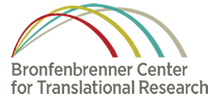 Experiencing something icky – the smell of vomit or the sight of maggots, for example – elicits an emotional response from most people. It’s a feeling we call disgust, likely an emotion that evolved to discourage us from ingesting noxious or dangerous substances.
Experiencing something icky – the smell of vomit or the sight of maggots, for example – elicits an emotional response from most people. It’s a feeling we call disgust, likely an emotion that evolved to discourage us from ingesting noxious or dangerous substances.
But a growing body of evidence on disgust shows that it now plays a much broader role in attitudes and judgments about everything in our lives – our food, our politics, even our relationships. David Pizzaro, assistant professor in psychology at Cornell, is making ground-breaking advances in this area.
Pizzaro’s has found evidence that individuals who are more easily disgusted in everyday life tend to have different moral and political views than those who are less easily disgusted. Subtle manipulations of disgust in the laboratory, such as a foul order, can temporarily alter people’s moral and political judgments.
One of his studies showed that people who feel disgust more readily have more unfavorable responses to homosexuals. Two others demonstrated that individuals who feel disgust more readily are more likely to be conservative.
This research shed lights on how basic differences in emotion leads to variations in social and political ideals that make up the fabric of our society. And provides concrete evidence that emotions play an important role in all of our lives.
You can listen to Pizzaro talk about his work on disgust by clicking on this link.










